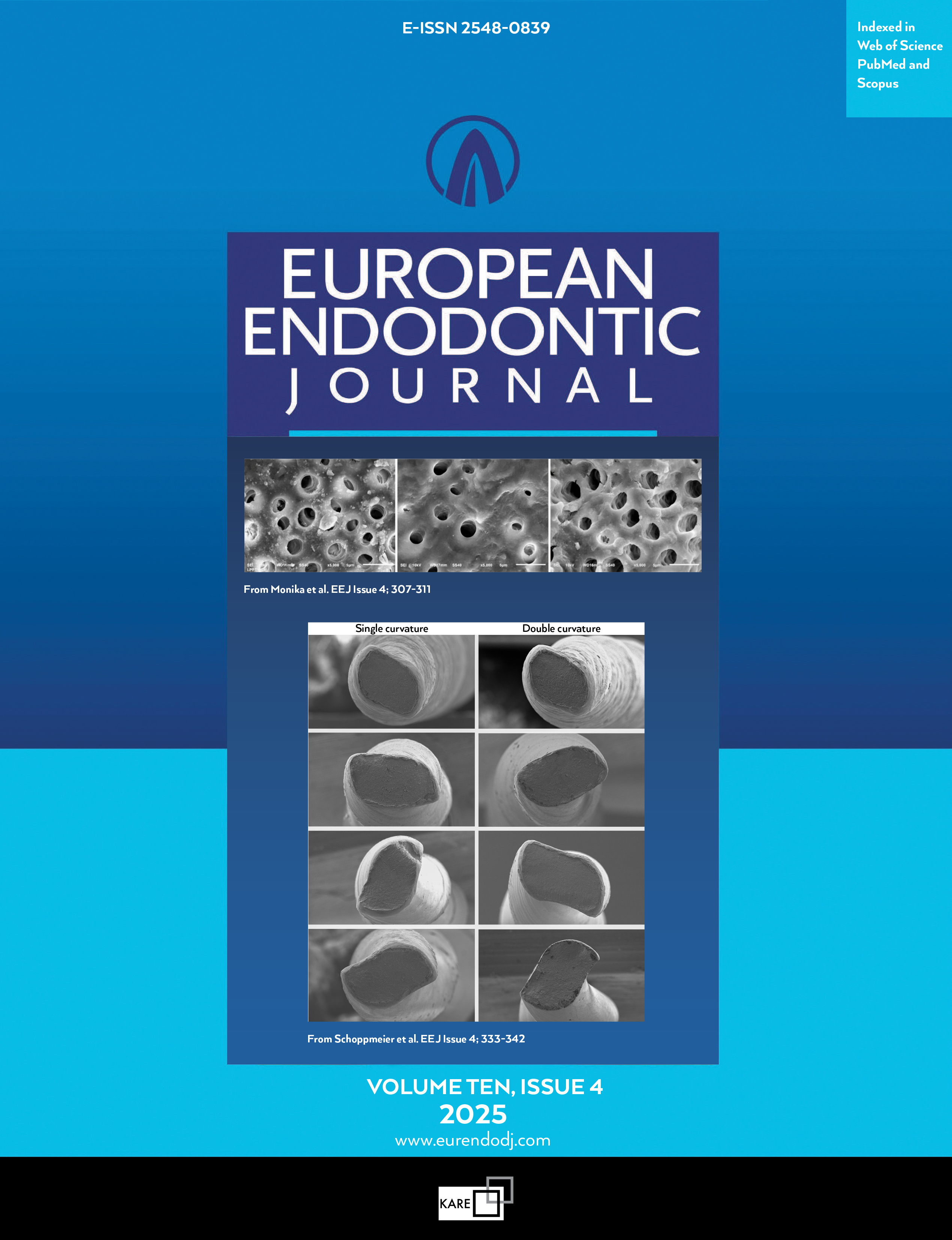Metrics
2024 IMPACT FACTOR
5 year Impact Factor
Eigenfactor Score
2024 CiteScore
Journal Citation Reports
(Clarivate 2025, JIF Rank)
Survival Outcomes of Post-Endodontic Crowns With and Without Repaired Access Cavities: A Retrospective Propensity Score Matching Study
Patrawee Sinkanarak, Sittichoke Osiri, Kanet ChotvorrarakDepartment of Operative Dentistry and Endodontics, Faculty of Dentistry, Mahidol University, Bangkok, ThailandObjective: This retrospective study aimed to evaluate and compare the survival outcomes of post-endodontic crowns with repaired access cavities and intact crowns, identifying factors influencing restoration longevity.
Methods: Clinical records of patients who underwent root canal treatment through existing crowns (crowns with repaired access cavities, CRA) or received crowns after root canal treatment (intact crowns, IC) between 2012 and 2023 were analysed. A 1: 1 propensity score matching was applied based on age, sex, tooth type, and crown type. The outcomes of the matched cases were classified as survival or non-survival. KaplanMeier analysis and log-rank tests were used to compare outcomes between the two groups over time. For CRA, multivariable Cox proportional hazards regression analysis was conducted to identify potential predisposing factors.
Results: Among 608 eligible endodontically treated teeth, 120 CRA and 488 IC met the inclusion criteria. After matching, 120 samples per group were analysed. The survival rate was significantly lower for CRA (85.8%) than for IC (91.7%) (p=0.004). Occlusal parafunctional habits or interferences were the only significant factors affecting CRA survival.
Conclusion: CRA demonstrated lower survival rates than those with IC, with occlusal parafunctional habits or interferences as key factors influencing their longevity.
Manuscript Language: English


